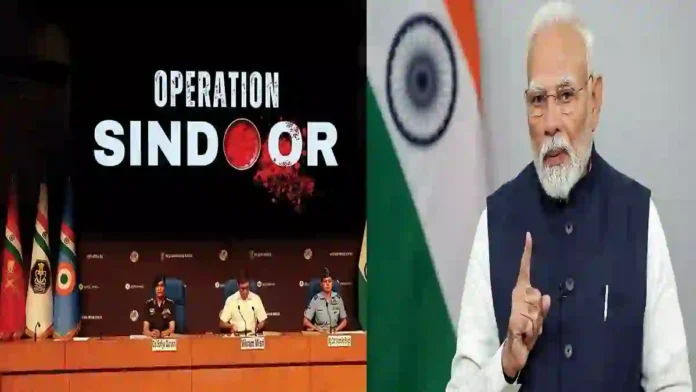In the wake of the Pahalgam massacre on April 22, 2025, where 26 civilians were brutally killed by the Pakistan-based terrorist group “The Resistance Front” (an offshoot of Lashkar-e-Taiba), India launched a precise and strategically calibrated military response—Operation Sindoor—on the night of May 7-8, 2025.
This operation specifically targeted terror training camps at nine carefully selected locations within Pakistan and Pakistan-occupied Kashmir, eschewing any engagement with military or civilian infrastructure. The aim was clear: deliver a punitive blow to terrorism networks while avoiding unrestrained escalation or civilian harm, a marked shift in conventional response frameworks.
Read- Nyoma Air Base: India’s High-Altitude Sentinel—A Game-Changer For The IAF In Himalayan Power Play
Pakistan’s immediate and escalatory answer came through coordinated drone and missile attacks against over a dozen Indian military installations across several states, including Jammu and Kashmir, Punjab, and Gujarat, on May 8.
India’s layered air defence systems effectively neutralised most incoming threats, as debris recovered from these attacks was traced to Pakistani origin. Notably, the Indian armed response demonstrated technological and strategic superiority: no significant military targets on Indian soil were destroyed during Pakistan’s counter-offensive—despite the reported firing of over 840 missiles by Pakistan.
During these brief but intense four days of hostilities, India, for the first time, demonstrated the reach and precision of its missile systems, including BrahMos cruise missiles, and executed coordinated strikes on high-value terrorist infrastructure—most notably the Lashkar-e-Taiba headquarters in Muridke and Jaish-e-Mohammed headquarters in Bahawalpur, leading to substantial losses among terrorist leadership.
Satellite imagery later confirmed that even highly fortified areas like the Kirana Hills, associated with Pakistan’s nuclear program, were struck, showing India’s willingness to target critical assets linked to national security threats.
Despite Pakistan’s claims of shooting down Indian fighter jets and inflicting damage, the actual impact on Indian military assets was negligible. The Indian operation made it evident that no locality in Pakistan facilitating terrorism was beyond the reach of Indian conventional arms.
Read- Modi’s Iron Shield: The Vision Behind Bharat’s Ballistic Missile Defence
Read- Pakistan Beats the Nuclear War Drum After India Tests Two Nuke-Capable Missiles
The aftermath of the conflict has left Pakistani-backed terrorist groups weakened and humiliated, with significant losses to their leadership and infrastructure.
Internally, factors now constrain Pakistan’s future options:
Economic And Social Pressures In Kashmir: Any renewed disruption of the tourist-dependent economy is unpopular among the local population, deterring further attacks that could invite more severe Indian retaliation.
Strategic Deterrence: India’s suspension of the Indus Waters Treaty and its explicit linkage to terrorism raise the stakes for Pakistan, as water scarcity could trigger unrest in vital provinces.
Military Calculus: The demonstration of Indian missile dominance and strategic deception showed that past doctrines of limited skirmishes or proxy terrorism may invite large-scale and unpredictable retaliations.
Looking ahead, while Rawalpindi’s Inter-Services Intelligence (ISI) continues to shelter and support groups like LeT and JeM, the costs of another cross-border attack have become dramatically higher. Yet, the prospect of Pakistan entirely restraining its “home-bred” jihadists appears slim; ideological drive and retaliatory motives among these groups remain potent. Pakistan’s military may seek justification for further action if it perceives Indian involvement in unrest within provinces like Balochistan or Khyber Pakhtunkhwa.
As a result, India’s security establishment, led by the National Security Advisor and bolstered by robust public messaging, emphasizes perpetual vigilance.
The era following Operation Sindoor is marked by a stronger, more explicit conventional deterrence posture by India—and a more unpredictable, but clearly higher-risk, security environment for cross-border terrorism in South Asia.
Agencies




